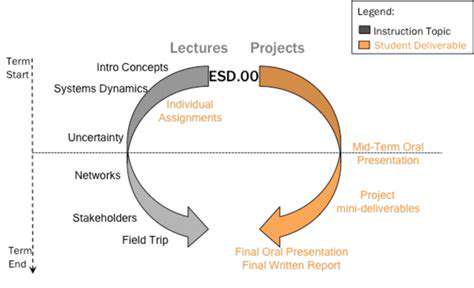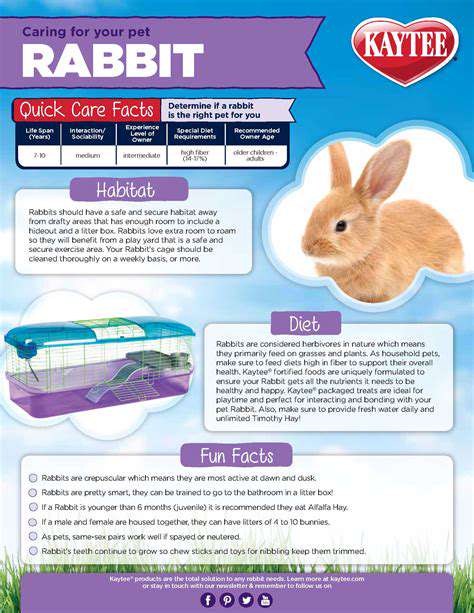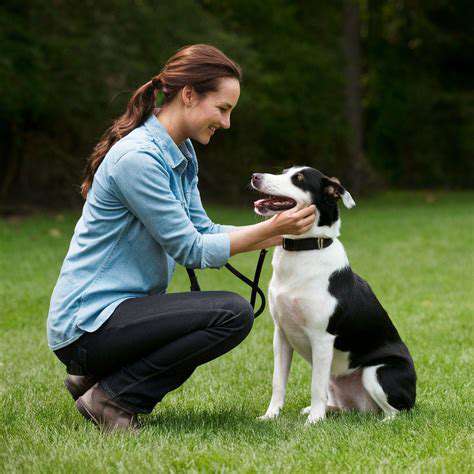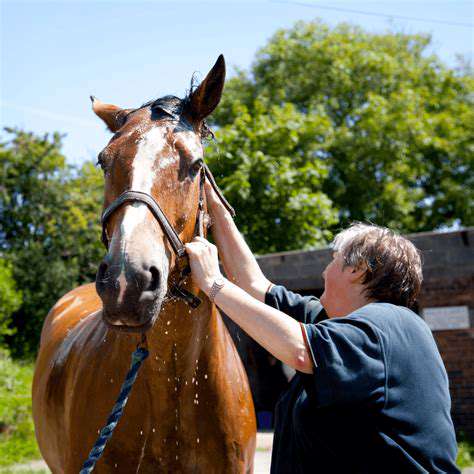Best Training Methods for Specific Dog Breeds
Pointers on Training Techniques for Retrievers
Fundamental Training Principles
Effective retriever training hinges on positive reinforcement, consistency, and patience. Avoid harsh punishment, as this can create fear and anxiety in the dog, hindering learning and potentially damaging the bond between you and your companion. Focus on rewarding desired behaviors with treats, praise, and affection. Consistency in commands and expectations is crucial for the dog to understand what's expected. A predictable environment fosters a sense of security and trust, making training more successful. Remember, each dog learns at its own pace. Be patient and celebrate small victories along the way.
A well-structured training routine, incorporating short, frequent sessions, is key. This prevents your dog from becoming overwhelmed or bored. Breaking down complex tasks into smaller, manageable steps allows for gradual learning and provides opportunities for positive reinforcement at each stage. Make training enjoyable by incorporating play and enthusiasm. This positive association will strengthen the learning process and create a desire to please.
Developing the Retrieving Instinct
Early exposure to retrieving objects is vital. Start with easily manageable items, like a favorite toy or a small ball, and gradually increase the challenge. Use exciting, motivating rewards to encourage the dog to bring the item back. Praise and positive reinforcement are essential in shaping the desired behavior. Consistent practice in controlled environments, like a fenced yard or a park, will build confidence and refine the retrieving skill. Gradually introduce distractions to enhance the dog's focus and responsiveness.
Using a lure, such as a hand or a toy, can be a very effective way to teach the dog to retrieve. Guide the dog with the lure to the item, and then reward the dog with a treat when they pick up the item. Practice in different locations and with various objects to reinforce the retrieving behavior in different environments. Gradually reduce the lure to encourage the dog to retrieve on its own initiative. This method helps the dog associate retrieving with positive reinforcement and builds anticipation for the reward.
Advanced Training Techniques and Handling
As your retriever gains proficiency, introduce more challenging scenarios. This might include retrieving in various environments, such as water, tall grass, or through obstacles. Training in these scenarios will help the dog build resilience and adapt to different conditions. Mastering these advanced techniques requires patience and consistency in your approach. Always ensure that the dog feels safe and confident throughout the training process. Remember to adjust your approach based on the dog's individual response and progress.
Working closely with a certified professional dog trainer can be invaluable in refining techniques and addressing specific issues. A professional can provide personalized guidance and offer strategies to overcome challenges. They can assess your dog's unique needs and behaviors to tailor training to maximize effectiveness. Professional guidance can also provide insights into potential issues, such as fear aggression, or resource guarding, and help to prevent problems before they escalate.
Consistency and Patience in the Long Run
Maintaining consistency in training is paramount for long-term success. Consistency in commands, rewards, and expectations fosters a predictable and secure learning environment. Avoid inconsistent cues or changing your approach mid-training session, as this can confuse the dog and hinder progress. Patience is crucial throughout the process. Each dog learns at its own pace, and some dogs may take longer to master certain skills than others. Celebrate small victories and maintain a positive, encouraging attitude to keep the dog motivated and engaged in the training.
Optimizing Training for German Shepherds
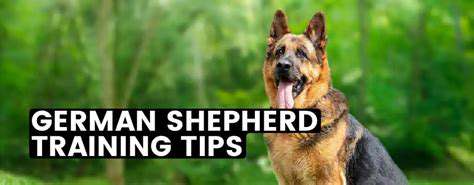
Pre-Training Considerations
German Shepherds, renowned for their intelligence and work ethic, require a structured and comprehensive training approach from the outset. Early socialization is crucial for developing well-adjusted and confident dogs. Exposing them to various sights, sounds, people, and other animals during their formative months helps prevent anxieties and fear-based behaviors later on. Consistent positive reinforcement techniques, such as rewarding desired behaviors with treats and praise, are essential for building a strong bond and promoting a positive learning environment. This early foundation lays the groundwork for future training success, ensuring a harmonious relationship with your canine companion.
Beyond socialization, a clear understanding of your German Shepherd's breed-specific needs is vital. German Shepherds are highly energetic dogs, requiring ample physical and mental stimulation to thrive. Ignoring these needs can lead to behavioral issues, such as destructive chewing or excessive barking. Providing appropriate outlets for their energy, such as daily walks, playtime, and interactive training sessions, is paramount for preventing these problems and keeping your dog happy and healthy.
Training Techniques
Utilizing positive reinforcement methods, such as rewarding desired behaviors, is crucial for effective training. Avoid punishment-based strategies, as these can be detrimental to the dog-human relationship and can actually increase anxiety and fear. Consistency in commands and rewards is paramount to clear communication and quick learning. Using clear and concise commands, coupled with immediate and predictable rewards, will help your dog understand the desired behavior. This will accelerate the training process and create a stronger, more responsive bond with your dog.
Employing interactive training methods can significantly enhance the training experience. Engaging games and puzzles that challenge your dog's mind provide valuable mental stimulation, while simultaneously reinforcing training commands. This approach not only strengthens the bond but also prevents boredom and maintains your dog's interest in learning. Incorporating these activities into your daily routine will keep your German Shepherd mentally engaged and prevent unwanted behaviors.
Consider using professional training resources. Dog trainers and certified professionals can provide valuable insights and guidance tailored to your specific needs and your dog's unique characteristics. A professional can assess your dog's progress and provide personalized feedback and recommendations. This personalized approach can help you identify any potential issues and implement effective strategies for improvement. Leveraging these resources can significantly accelerate your dog's training and ensure a smoother, more efficient learning process.
Advanced Training and Beyond
As your German Shepherd progresses through training, consider incorporating advanced obedience commands, such as agility courses or scent work. These advanced training techniques not only stimulate your dog's mind but also provide a fulfilling outlet for their inherent energy and intelligence. These activities can strengthen the bond between you and your dog, fostering a deeper level of communication and understanding. Engaging in these activities can be a rewarding experience for both you and your German Shepherd.
Beyond basic obedience, exploring specialized training areas, such as protection work or therapy dog training, can unleash the full potential of your German Shepherd. These specialized training opportunities allow your German Shepherd to excel in areas that align with their unique talents and temperament. By exploring these avenues, you can ensure your dog is engaged and challenged, ultimately leading to a happier and healthier relationship.
Addressing Specific Needs of Working Dogs (e.g., Border Collies, Huskies)
Understanding Working Dog Temperaments
Working dogs like Border Collies and Huskies possess distinct temperaments shaped by their evolutionary roles. Understanding these inherent traits is crucial for effective training. For example, Border Collies are known for their intense drive to herd, which translates into a need for focused, stimulating activities. This high energy and desire for constant engagement must be channeled constructively, otherwise, it can manifest as destructive behaviors if left unaddressed. Proper training should harness this drive, providing outlets for their inherent herding instincts.
Tailoring Training Methods to Specific Breeds
Each working breed, while sharing some common traits, also possesses unique characteristics that dictate the most effective training approaches. Huskies, for example, are renowned for their independent spirit and strong will. Training these dogs often requires a more patient and reward-based approach, focusing on building trust and positive reinforcement. Aggressive or forceful methods are less likely to yield positive results with this breed.
Conversely, Border Collies thrive on clear, consistent commands and a structured environment. Their intelligence demands a training regime that is intellectually stimulating and provides ample opportunities for problem-solving. A purely reward-based approach might not be sufficient, as they need clear direction and the satisfaction of successfully completing tasks.
Creating a Stimulating Training Environment
The environment plays a significant role in successful training for working dogs. Boredom can lead to frustration and undesirable behaviors. Enriching the training environment with stimulating activities and challenges is crucial. This could involve incorporating interactive games, puzzle toys, and opportunities for exploration and socialization. Providing mental and physical outlets helps channel their energy and maintain a positive learning experience.
Addressing Potential Challenges in Training
Working dogs, with their high energy levels and inherent drive, can present unique training challenges. Owners need to be prepared to address potential issues such as resource guarding, herding behaviors that extend beyond the desired activities, or destructive behaviors stemming from pent-up energy. Early intervention and proactive problem-solving are essential for mitigating these challenges. Seeking guidance from experienced dog trainers can be invaluable in overcoming obstacles and refining training strategies.
The Importance of Positive Reinforcement
Positive reinforcement is a cornerstone of effective training for all dogs, especially working breeds. Using rewards, praise, and positive cues creates a more enjoyable and motivating learning experience. This approach fosters trust and encourages a willing participation in the training process. Punishment-based methods can damage the bond between dog and owner, and often lead to unintended behaviors and anxieties. A consistent and positive approach fosters a strong and mutually beneficial relationship between the owner and the working dog.
Read more about Best Training Methods for Specific Dog Breeds
Hot Recommendations
- Review: [Specific Brand] Small Animal Cage
- Why Rescuing Pets Saves Lives
- Best Pet First Aid Kits [What to Include]
- How to Help Stray Animals in Your Community
- Guide to Adopting a Pet When You Have Kids
- Top Reptile Heat Lamps
- Heartwarming Rescue Stories That Will Inspire You
- Review: [Specific Brand] Bird Cage
- Best Aquarium Filters [2025 Review]
- Review: [Specific Brand] Smart Litter Box

